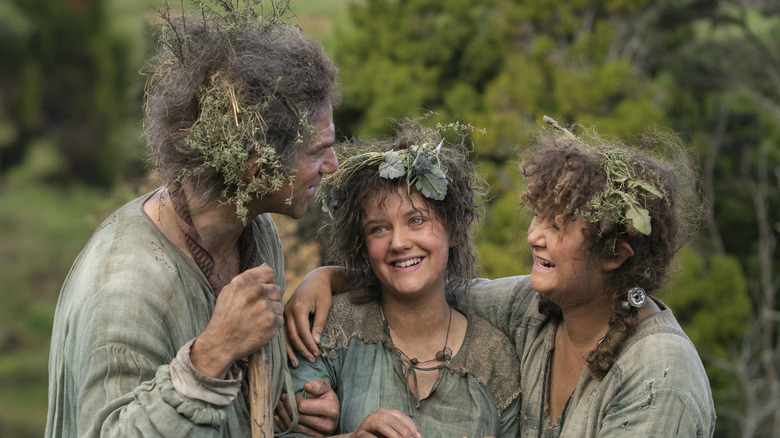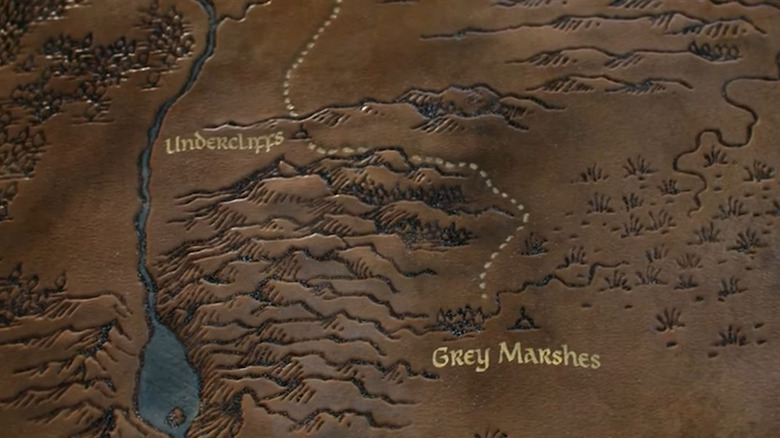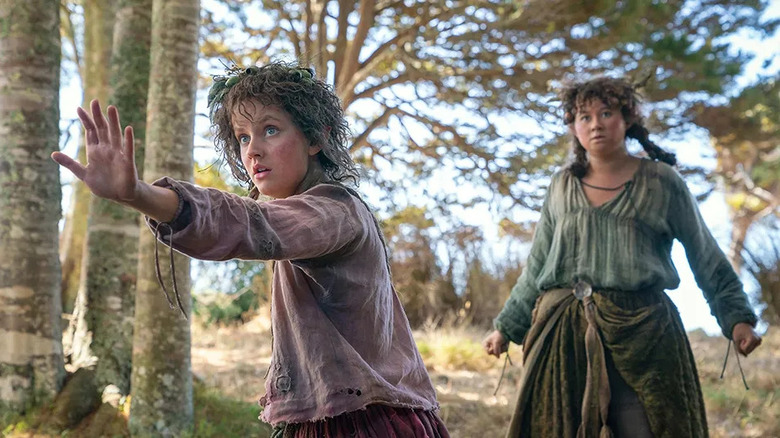The Rings Of Power: An Ode To Map Transitions In The Lord Of The Rings
"The Lord of the Rings: The Rings of Power" is truly a gift for fans of Tolkien. As fantastic and influential as Peter Jackson's movies were, this show has a benefit of time Jackson didn't. On the one hand is the time since those movies came out, which has seen the public's acceptance of high fantasy grow more and more, allowing "The Rings of Power" to dive into the nerdiest aspects of Tolkien's legendarium without compromising for the sake of general audiences. Then there's the benefit of multiple seasons and the time they allow for the story to explore different aspects of Middle-earth that a movie wouldn't necessarily have the space for.
From expanding on Tolkien's fascination with trees and nature, to giving us walking songs the professor would be proud of, to just capturing Tolkien's sense of doom, "The Rings of Power" is building up to be a fantastic adaptation already, but we're finally getting what may be the most important part of Tolkien's writing: maps!
'I wisely started with a map'
"I wisely started with a map, and made the story fit," Tolkien once wrote about his work on "The Lord of the Rings," and that philosophy stretched not only to his entire legendarium, but set a standard for the fantasy genre ever since, with virtually every fantasy novel and game coming with its own detailed map. What would "Game of Thrones" be without the opening title sequence's map telling us where everyone is?
When it came to writing "Lord of the Rings," Tolkien first came up with a map, partly to explain where the different cultures and languages he had already invented would be, but that idea paved the way for a love of maps that distinguished his writing from most others. From "The Hobbit" to "The Silmarillion" and beyond, Tolkien's writing is always accompanied by maps which let you follow the story, but also paints a picture of how cultures would grow and evolve depending on their environment. In "The Rings of Power," seeing the path the harfoots take on their journey is a cool sight, sure, but it also shows how much their arduous journeys impact their culture and their outlook on life.
A bigger world
So far, "The Rings of Power" has given us map transitions to show us where we are in the world of Arda, tracking Galadriel's journey from Lindon to Númenor, but also Elrond's journey from Lindon to Eregion to Khazad-dûm. Last week's episode took things a step further, not only giving us even more map transitions, but following the harfoot's migration during its phenomenal walking song number. The map showed not only the vast distances the halflings cover, but also the perilous terrain they go through. It is a small detail, one that could easily seem like a stuffy visual shortcut to avoid showing yet another group of halflings walk for hours on end, but it serves another purpose, one that Tolkien understood very well — it makes the world seem bigger and real.
The original dungeon master, Tolkien did a lot of world building long before he ever starting thinking about story, which means every single aspect of his legendarium is rich with lore and history, but it also means that every single aspect of his legendarium is rich with lore and history you need to study. "The Rings of Power" is doubling down on this, with every storyline and every character constantly referring to events from the First Age we are not seeing due to rights issues, but which infuse the show with a sense of importance and continuity that makes Middle-earth feel like a real, breathing place.


